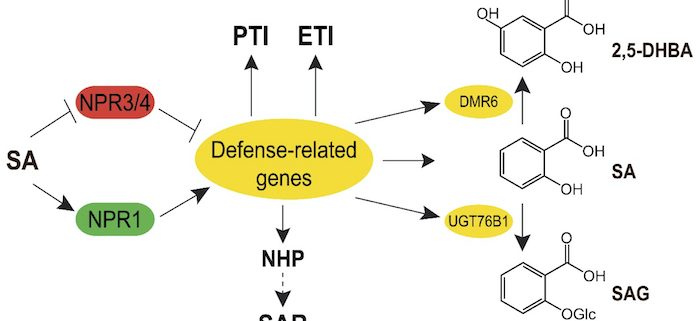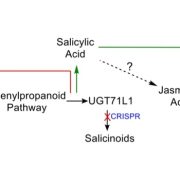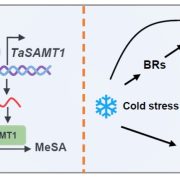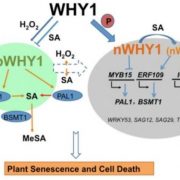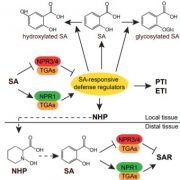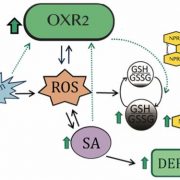Surprise –salicylic acid receptors can do so much!
Liu et al. investigate the diverse roles of the salicylic acid receptors NPR1, NPR3 and NPR4 in local and long-range plant immunity. The Plant Cell (2020). https://doi.org/10.1105/tpc.20.00499
By Yanan Liu1,2, Tongjun Sun2,3 and Yuelin Zhang2 (1 College of Bioscience and Biotechnology, Hunan Agricultural University, Changsha, China;2 Department of Botany, University of British Columbia, Vancouver, BC, Canada; 3 Michael Smith Laboratories, University of British Columbia, Vancouver, BC, Canada)
Background: Plants use a set of proteins that localize to the cell-surface, called Pattern Recognition Receptors (PRRs), as well as intracellular Resistance (R) proteins, to sense and respond to pathogen attacks. PRRs recognize critical pathogen components and activate Pattern-triggered immunity (PTI). Successful pathogens can themselves deliver effector proteins into plant cells to inhibit PTI. As a counteracting measure, R proteins can also detect effectors directly or indirectly, initiating effector-triggered immunity (ETI). In addition, pathogen infections at the local site can activate systemic acquired resistance (SAR), which mounts a long-lasting and effective defense against a wide range of pathogens throughout the entire plant. The defense phytohormone Salicylic acid (SA) is critical in this process and is perceived by two groups of receptors, NPR1 and NPR3/NPR4 in Arabidopsis thaliana. Furthermore, N-hydroxypipecolic acid (NHP) serves as a mobile signal in the context of SAR.
Research question: How does SA perception contribute to PTI, ETI and SAR?
Findings: We used the SA-insensitive npr1-1 npr4-4D double mutant, which is thought to completely block SA perception in Arabidopsis. We discovered that perception of SA by the two groups of dedicated receptors contributes to the induction of NHP biosynthetic genes and, thus, production of NHP during pathogen infection. In addition, SA perception by NPR1 and NPR4 contributes additively to PTI and ETI. Finally, SA perception also plays critical roles in regulating the biosynthesis and catabolism of SA.
Next steps: SA induces NHP production through SA receptors, but how NHP promotes SA biosynthesis and SA-induced resistance in tissues distal from the infection site is unclear. The future identification of NHP receptor(s) will be crucial in the dissection of this part of the pathway.


